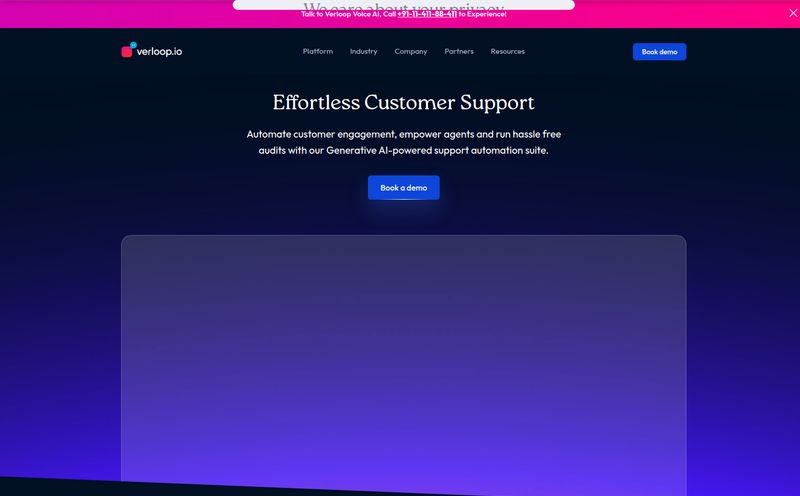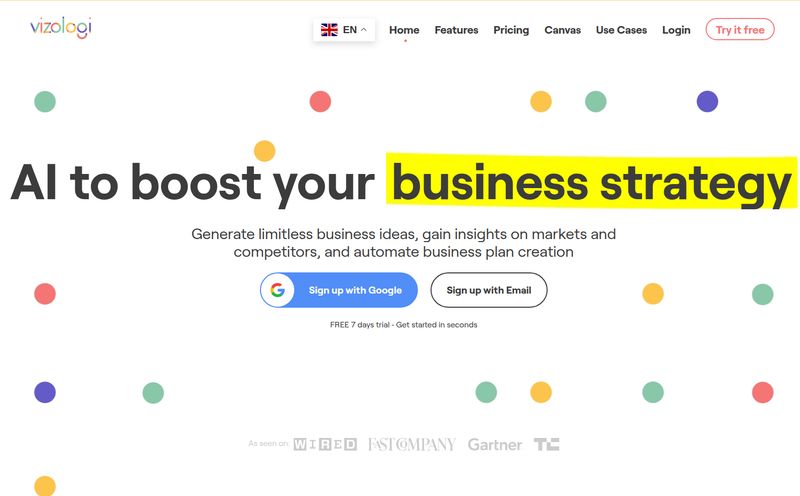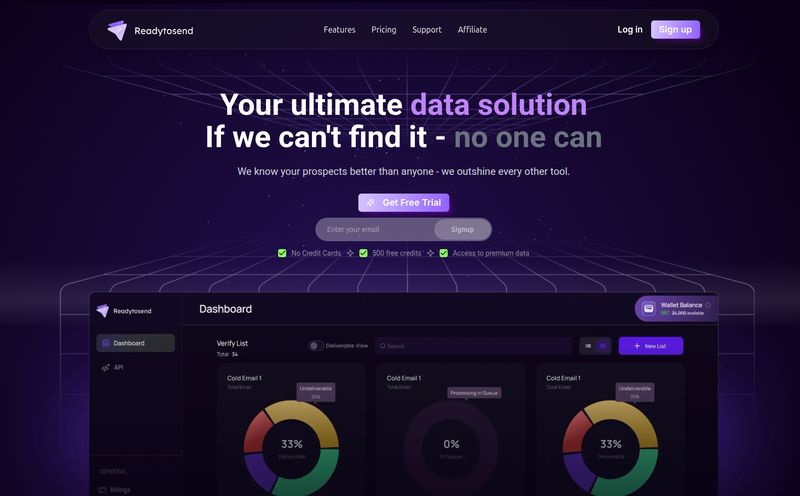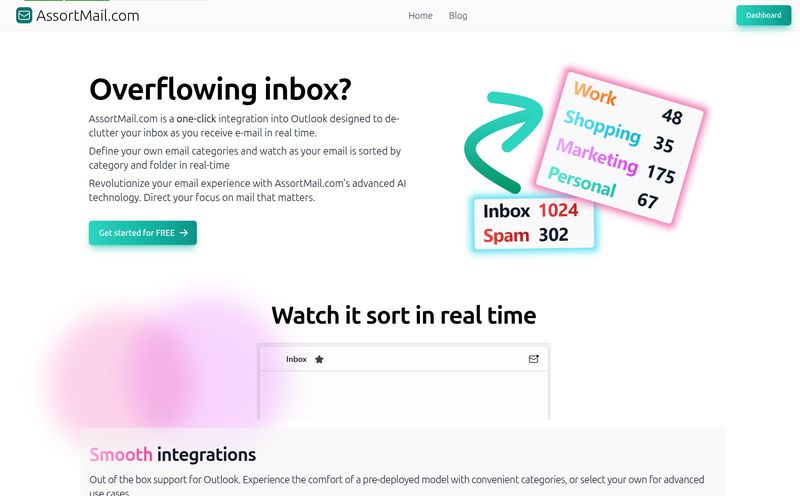For the last few years, the words "supply chain" have been enough to give anyone in eCommerce or logistics a mild panic attack. It’s been a chaotic scramble of labor shortages, skyrocketing customer expectations (thanks, Amazon Prime), and operational costs that just keep climbing. We've all felt it. I’ve personally worked with dozens of clients whose growth was being strangled not by a lack of demand, but by the sheer inability to get products out the door efficiently.
So, when a company comes along flashing logos from Walmart and Maersk and talking about AI-powered robots that can triple productivity, my inner skeptic raises an eyebrow. But my inner pragmatist pulls up a chair. That company is Berkshire Grey, and they’ve been making some serious waves in the world of warehouse automation. But is it all just shiny tech, or is this the real deal? I decided to take a closer look.
What is Berkshire Grey, Anyway?
At its heart, Berkshire Grey is an intelligence company that happens to build robots. They create AI-driven robotic systems designed to automate the grittiest, most repetitive tasks in a fulfillment center. Think of the endless cycle of identifying items, picking them from shelves, sorting them for different orders, and packing them into boxes. It's the kind of work that's physically demanding, prone to human error, and increasingly difficult to staff.
Berkshire Grey’s pitch is simple: let our robots handle that. Their systems are built for big, complex operations in retail, eCommerce, grocery, and third-party logistics (3PLs). They aren't just selling a robotic arm; they're offering a full-stack, intelligent solution that integrates into your existing warehouse to make the whole process faster and cheaper.
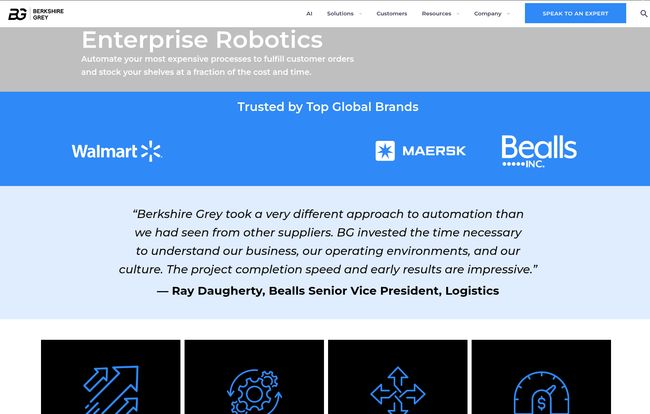
Visit Berkshire Grey
Why Big Names like Walmart are Betting on These Robots
You don’t land a client like Walmart by having a flimsy product. When titans of industry back a technology, the rest of us should probably pay attention. It’s not just about the raw power of the robots; it's about the partnership and the approach. I came across a quote from Ray Daugherty, a VP at Bealls, that really stood out:
Berkshire Grey took a very different approach to automation than many other providers we considered... They took the time necessary to understand our business, our operating environments, and our culture. The level of collaboration... was and continues to be impressive.
That right there is the secret sauce. It’s not about dropping a bunch of machines on the floor and wishing the team good luck. It's about a collaborative integration. This suggests a company that understands the immense operational challenge of overhauling a warehouse, even partially. They claim their systems can be integrated with no disruption to ongoing operations, which, if true, is a massive selling point.
The Nuts and Bolts: What Berkshire Grey's Robots Actually Do
Okay, so what are we really talking about here? Let's break down their core solutions.
Robotic Picking and Put Walls
Imagine a person standing in front of a massive wall of cubbies (a put wall), trying to sort items for hundreds of different online orders. It’s slow and mistakes happen. Berkshire Grey automates this with robotic systems that can pick individual items—even tricky ones like soft polybags or fragile goods—and place them into the correct order bin with incredible speed and accuracy. This directly tackles one of the biggest bottlenecks in any eCommerce fulfillment center.
Package Sortation on Autopilot
Once orders are packed, they need to be sorted for shipping. In a high-volume facility, this can look like pure chaos. Berkshire Grey’s package sortation systems use mobile robots and intelligent software to route packages to the right destination, whether it’s a specific mail carrier or a particular delivery route. This improves throughput and cuts down on the costly errors of sending a package to the wrong place.
Smarter Store Replenishment
This one is huge for businesses that balance a storefront with an online presence. The same technology used for customer orders can be applied to sorting and packing inventory to restock physical retail stores. It helps ensure the right products get to the right shelves at the right time, which is critical for maintaining a good customer experience in-store.
The AI Brain Behind the Brawn
The hardware is impressive, sure, but the real magic is the AI. This isn’t just a pre-programmed arm repeating the same motion. Berkshire Grey's AI allows the robots to identify a massive range of items, learn on the fly, and work together as a cohesive system. This is what allows them to handle the organized chaos of a real-world warehouse, not just a sterile lab environment.
The Real-World Impact: More Than Just Cool Robots
So, what does this all mean for the bottom line? According to Berkshire Grey, the results are pretty dramatic. They claim their solutions can increase productivity by more than 3x while reducing labor needs by up to 50%. For a business struggling with labor costs and shortages, those numbers are impossible to ignore. They also promise a 25-40% decrease in fulfillment cost per unit. This isn't just a marginal gain; it's a fundamental shift in operating economics. That’s the kind of metric that gets a CFO’s attention.
From an SEO and traffic generation perspective, improved order accuracy and faster fulfillment times have a direct impact on customer reviews and brand reputation, which in turn influences organic search performance. Happy customers lead to better rankings. It's all connected.
Let’s Talk Money: The Berkshire Grey Price Tag
This is the part where everyone leans in. What does it cost? Well, you won't find a pricing page on their website, and for good reason. These are enterprise-level, custom-fit solutions. The cost for a massive Walmart distribution center will be worlds apart from a mid-sized 3PL.
However, they offer two interesting models: a traditional capital expenditure (Capex) model where you buy the systems upfront, and a Robotics as a Service (RaaS) model. In my book, this RaaS option is brilliant. It allows businesses to adopt this advanced automation with a more predictable, subscription-like operating expense (Opex) instead of a massive initial investment. It lowers the barrier to entry and makes the tech accessible to a wider range of companies who might balk at the upfront cost.
The Other Side of the Coin: Potential Hurdles
No solution is perfect, and it would be disingenuous to pretend otherwise. While the RaaS model helps, the initial investment for a Capex purchase is likely significant. This isn't a Shopify plugin; it's a major infrastructure project. You also have to consider the reality of integrating these systems with your existing Warehouse Management System (WMS) and other software. While Berkshire Grey claims this is seamless, any experienced operator knows that any integration project has its complexities.
Finally, while the robots reduce the need for certain types of labor, they increase the need for others. Your staff will need some training to manage and maintain these robotic systems. It's a shift in skill sets, not a complete elimination of human oversight, and that’s a transition that needs to be managed carefully.
So, Is Berkshire Grey a Good Fit for Your Business?
If you're running a small operation out of your garage, then no, this probably isn't for you. But if you're a medium to large-scale enterprise in retail, grocery, eCommerce, or logistics, and you're feeling the squeeze from labor costs, fulfillment errors, and the relentless pressure for speed, then Berkshire Grey should absolutely be on your radar. The fact that they can demonstrably show ROI and have the trust of global leaders speaks volumes.
Frequently Asked Questions about Berkshire Grey
- What exactly does Berkshire Grey do?
- They provide AI-powered robotic systems that automate manual tasks in warehouses and fulfillment centers, such as picking, sorting, and packing items for both eCommerce orders and store replenishment.
- Who are their main customers?
- Their solutions are built for large-scale operations. Their customers are typically in retail, eCommerce, grocery, third-party logistics (3PLs), and package handling industries. Think companies like Walmart, Bealls, and Maersk.
- How much does Berkshire Grey cost?
- There's no public pricing. Costs are custom based on the scale and complexity of the project. They offer both a traditional upfront purchase (Capex) and a subscription-like Robotics as a Service (RaaS) model to make it more financially accessible.
- Will their robots work in my existing warehouse?
- Yes, a key part of their value proposition is that their systems are designed to integrate into existing facilities and workflows, often without disrupting ongoing operations. However, a site assessment would be needed.
- Do these robots replace all human workers?
- No, they don't replace all humans. They automate repetitive, physically demanding tasks, but they require skilled staff to manage, oversee, and maintain the robotic systems. It represents a shift in the type of labor needed.
- What makes their AI special?
- Their AI enables the robots to identify and handle a very wide variety of items, including those that are traditionally difficult for robots (like apparel in polybags). It also helps the entire system of robots learn and adapt to the specific environment of the warehouse.
Final Thoughts
Look, the supply chain isn't getting any simpler. The pressures are only going to intensify. For years, the solution has been to either throw more people at the problem or to undertake enormously disruptive, bank-breaking automation projects. Berkshire Grey appears to be carving out a very compelling middle ground with its intelligent, AI-driven, and somewhat flexible approach.
The combination of proven results with top-tier brands and the accessible RaaS model makes this more than just another piece of vaporware. It’s a practical solution to a very real, very expensive problem. If I were running a large-scale fulfillment operation today, I'd definitely be making that phone call.
